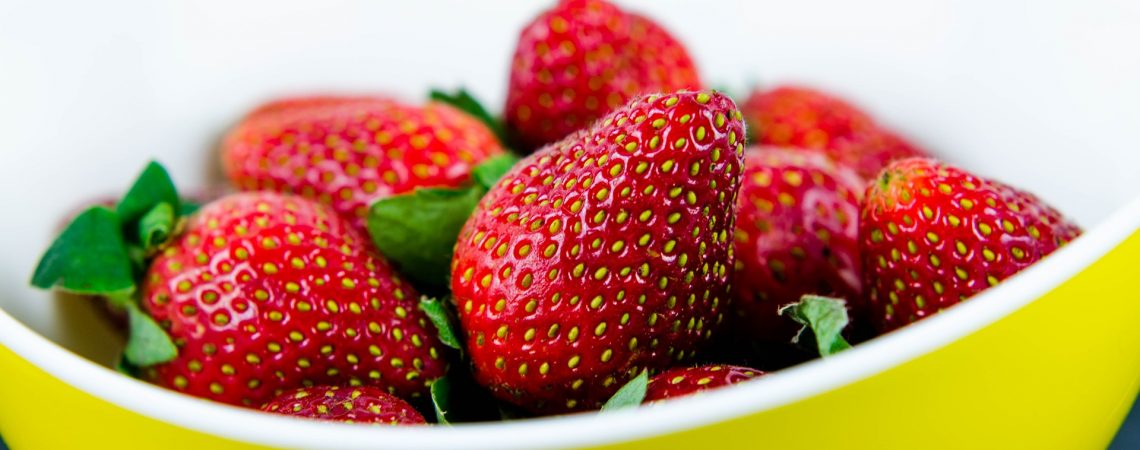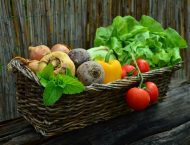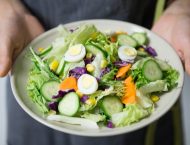What’s in this article
- What is a FODMAP?
- The FODMAP diet
- What to eat
- What not to eat
What is a FODMAP?
FODMAPs are short-chain carbohydrates (sugars) that are found in foods and are poorly absorbed into the small intestine. FODMAP is an acronym standing for:
Fermentable
Oligo-
Di-
Mono-saccharides
And
Polyols
Not all carbohydrates are considered FODMAPs and even though they are present in the food we eat, restricting them from our diet is beneficial for our digestive health. Shot chain carbohydrates include lactose, fructose, sorbitol, fructans and GOS. They all have a similar effect on your intestine, they are badly absorbed if absorbed at all. These carbohydrates also bring water with them into the intestine and are agitated by colonic bacteria causing the production of gasses and expansion of contents in the intestine. This stretches the intestine and causes pains and discomfort not dissimilar to irritable bowel syndrome.
Following the FODMAP diet has been proven to reduce the symptoms of an irritable bowel or inflammatory bowel disease.
Symptoms of irritable bowel syndrome include:
- excessive wind (flatus)
- abdominal pain
- bloating and distension
- nausea and changes in bowel habits (diarrhea and/or constipation)
The FODMAP diet
Many high-FODMAP foods are actually considered healthy choices. And for people who can eat them they are, however, for people with IBS this is not the case. These people will often have to limit their portions of these types of foods in order to feel healthy and not have any IBS symptoms. Luckily there are many nutritious low-FODMAP foods for those who cannot tolerate FODMAPS. The diet limits the intake of fiber which is not possible for the body to digest.
According to the Digestive Health Center Nutrition Services, the following chart shows which foods are good to eat and those that are not. If you would like to follow the FODMAP diet you can reference the below chart:
| Food Group | What to Eat | What to Limit |
| Meats, Poultry Fish, Eggs
|
beef, chicken, canned tuna, eggs, egg whites, fish, lamb, pork, shellfish, turkey, cold cuts
|
foods made with high FODMAP fruit sauces or with HFCS
|
| Dairy
|
lactose-free dairy, small amounts of: cream cheese, half and half, hard cheeses (cheddar, colby, parmesan, swiss), mozzarella, sherbet
|
buttermilk, chocolate, cottage cheese, ice cream, creamy/cheesy sauces, milk (from cow, sheep or goat), sweetened condensed milk, evaporated milk, soft cheeses (brie, ricotta), sour cream, whipped cream, yogurt
|
| Meat, NonDairy Alternatives
|
almond milk, rice milk, rice milk ice cream, nuts, nut butters, seeds
|
coconut milk, coconut cream, beans, black eyed peas, hummus, lentils, pistachios, soy products
|
| Grains
|
wheat free grains/wheat free flours (gluten-free grains are wheat free): bagels, breads, hot/cold cereals (corn flakes, cheerios, cream of rice, grits, oats, etc), crackers, noodles, pastas, quinoa, pancakes, pretzels, rice, tapioca, tortillas, waffles
|
chicory root, inulin, grains with HFCS or made from wheat (terms for wheat: einkorn, emmer, kamut, spelt), wheat flours (terms for wheat flour: bromated, durum, enriched, farina, graham, semolina, white flours), flour tortillas, rye
|
| Fruits
|
bananas, berries, cantaloupe, grapes, grapefruit, honeydew, kiwi, kumquat, lemon, lime, mandarin, orange, passion fruit, pineapple, rhubarb, tangerine
|
avocado, apples, applesauce, apricots, dates, canned fruit, cherries, dried fruits, figs, guava, lychee, mango, nectarines, pears, papaya, peaches, plums, prunes, persimmon, watermelon
|
| Vegetables
|
bamboo shoots, bell peppers, bok choy, cucumbers, carrots, celery, corn, eggplant, lettuce, leafy greens pumpkin, potatoes, squash, yams, (butternut, winter), tomatoes, zucchini
|
artichokes, asparagus, beets, leeks, broccoli, brussel sprouts, cabbage, cauliflower, fennel, green beans, mushrooms, okra, snow peas, summer squash
|
| Beverages
|
low FODMAP fruit/vegetable juices (limit to 1⁄2 cup at a time), coffee, tea
|
any with HFCS ̧ high FODMAP fruit/vegetable juices, fortified wines (sherry, port)
|
| Seasonings, Condiments
|
most spices and herbs, homemade broth, butter, chives, flaxseed, garlic flavored oil, garlic powder, olives, margarine, mayonnaise, onion powder, olive oil, pepper, salt, sugar, maple syrup without HFCS, mustard, low FODMAP salad dressings, soy sauce, marinara sauce (small amounts), vinegar, balsamic vinegar
|
sweeteners: sorbitol, mannitol, isomalt, xylitol (cough drops, gums, mints)
|
Source: Digestive Health Center Nutrition Services The Low FODMAP Diet
At Amsety we have prepared many low FODMAP recipes for you to enjoy, below are a few to get you started:
- Honey Sriracha Glazed Meatballs
- Pickled Cucumber Salad
- Pineapple Cucumber Salad Recipe
- Spicy Tomato Basil Soup
If you wish to follow the FODMAP diet you should consult your doctor first. The diet should be followed for at least four weeks for any results to be seen. If this diet is not beneficial to your digestion after four weeks then there should be no reason for you to follow this diet.
Find out about the nutrition bar that 98% of liver health experts would recommend!
References
gastrojournal.org
monash.edu
FODMAPfriendly.com
Digestive Health Center Nutrition Services The Low FODMAP Diet

 (442) 244-5115
(442) 244-5115















